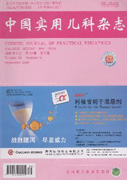Multiple acyl-CoA dehydrogenase deficiency,also known as glutaric aciduria typeⅡ,is an autosomal recessive inherited metabolic disease. It is a mitochondrial electron transport chain and fatty acid metabolism disorder caused by a defect of electron transfer flavoprotein(ETF) or ETF dehydrogenase(ETFDH),resulting in the damage to multiple organs such as myocardia,liver,brain and skeletal muscle. The clinical diagnosis of multiple acyl-CoA dehydrogenase deficiency is difficult due to the lack of specific symptoms and signs of the patients. To make a definitive diagnosis,blood aminoacids and acylcarnitine profiles,urinary organic acids profiles and gene analysis are necessary. According to the response to riboflavin(or vitamin B2),multiple acyl-CoA dehydrogenase deficiency could be divided into riboflavin-responsive form and riboflavin-unresponsive form. The riboflavin-responsive form is usually observed in the late-onset cases with good outcome. The patients of riboflavin-unresponsive form usually have early-onset with severe diseases. Bezafibrate, L-carnitine,coenzyme Q10,sodium-D,L-3-hydroxybutyrate and low-fat die should be considered for the treatment. Some patients with riboflavin-unresponsive form show poor outcome.

